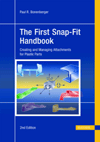"You can't specify a plain bearing by size or color," says Aubrey G. Butler III, product manager at Igus Inc. (East Providence, RI). "We make bearings in 16 materials to meet different operating conditions."
Also known as journal bearings or sleeve bearings, plain bearings are used to reduce friction in linear, rotary and oscillating motion applications. They can be found in myriad products, including cars, tractors, automatic welders, vending machines, pumps, dishwashers and dental equipment.
Plain bearings operate with a sliding action, rather than the rolling action of antifriction bearings. As a result, they are best used in light- and moderate-load applications.
Compared with plain bearings, antifriction bearings can handle much higher loads, speeds and temperatures. They also last longer and produce much less friction. "A linear ball bearing has a coefficient of friction of 0.001, whereas the lowest coefficient of friction for a plain bearing is about 0.05," says Bob Abbandondelo, product manager with the Molded Products Div. of Danaher Motion (Port Washington, NY).
On the other hand, antifriction bearings are larger, heavier, noisier and more expensive than plain bearings. They also need more maintenance. "Use ball bearings in applications that require extreme speeds, extreme temperatures or absolutely no friction," says Butler. "Beyond that, it's rare that we don't have a plain bearing for a particular application."
There are two types of plain bearings: lubricated, or wet, bearings, and self-lubricating, or dry, bearings.
In lubricated bearings, a film of fluid separates the moving parts. These bearings can be made from white metal, copper alloys and aluminum alloys. In low-speed applications, the natural adhesion of the lubricant to the parts is enough to keep them separated. For higher speeds, hydrostatic or hydrodynamic lubrication is necessary. In hydrostatic bearings, the lubricant inside the bearing is pressurized, so a fluid film separates the parts regardless of whether the bearing is turning. In hydrodynamic bearings, a fluid film separates the parts only when they are moving.
Dry bearings operate without a significant fluid film to separate the parts. These bearings can be made from sintered bronze, which can be impregnated with oil, graphite or polytetrafluoroethylene (PTFE). More commonly, dry bearings are made from plastics, including nylon, PTFE, acetal, phenolics, and polyimide. Lubricants and fillers are usually added to these materials, and many suppliers have developed proprietary blends.
The choice of metal or plastic depends on several factors, says Abbandondelo. If the bearing will be exposed to temperatures above 500 F, a metal bearing is the best option. If weight is an issue, as in aerospace applications, a plastic bearing will be lighter. If contamination is a concern, as in medical applications, plastic bearings should be used, because they withstand cleaning and won't shed lubricant.
The size of a plain bearing is determined by the diameter of the shaft and the length of the housing. The thickness of the bearing varies with the manufacturer and the application, but generally, they should be as thin as possible. "The thinner it is, the faster it dissipates heat," says Butler.
When specifying plain bearings, the most important criteria are the load, speed, and ambient and operating temperatures. Engineers should specify bearing length, bearing life and environmental factors, such as exposure to chemicals or abrasives. They should also provide data on the shaft, including its diameter, material, hardness and finish.



